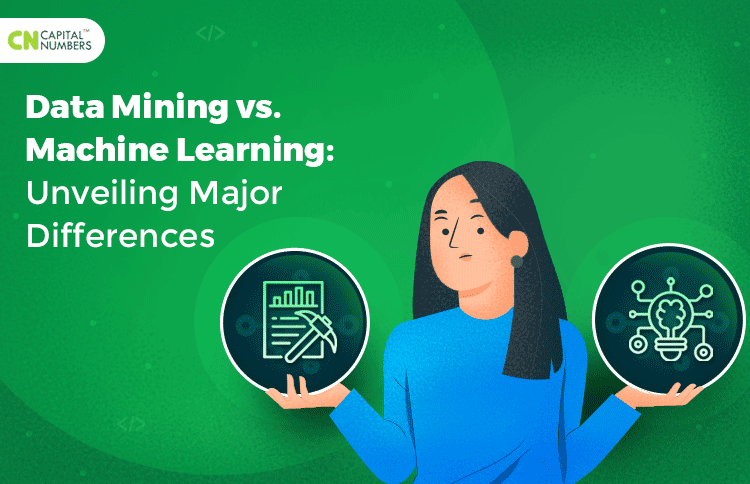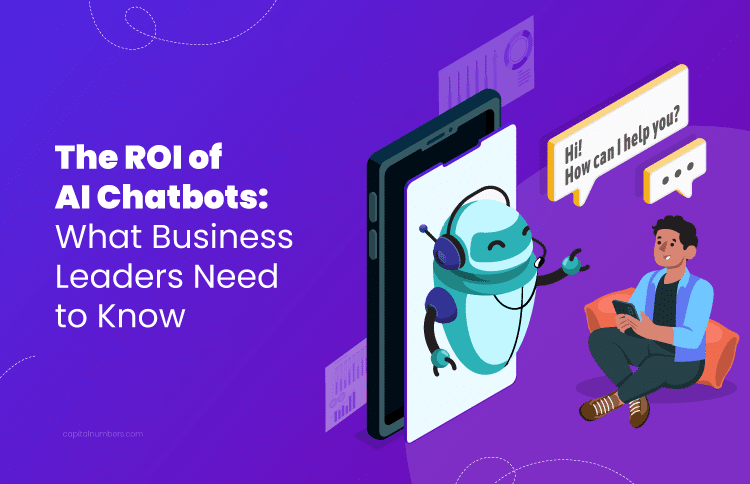Data Mining vs. Machine Learning: Unveiling Major Differences
Table of Contents
Organizations around the globe are making the most out of modern technologies, including data mining and machine learning. Finance, healthcare, logistics, e-commerce, and retail sectors are using these techniques to sift through the goldmine of data and turn it into valuable insights that impact their bottom line. For instance, data mining and machine learning techniques are helping businesses in optimizing marketing campaigns, predicting sales, improving operational efficiency and customer relations, enabling quality control, efficient inventory management, etc.
Let’s look at the example to help you elaborate more on the business application of both techniques. In Warehouse, organizations often use data mining to solve picker routing and batching problems. Here, data mining uses machine learning techniques to estimate the duration of the shortest possible route to increase efficiency.
So, Are you engrossed? Let’s find out the meaning and differences between data mining and machine learning.
Data Mining
Data Mining is the practice of analyzing enormous amounts of datasets to extract actionable information to help companies solve issues, predict trends, discover new possibilities, and mitigate risks. The process begins with setting up a business aim, collecting data through numerous sources, and then putting it into analytical data repositories, also known as Data warehouses. Afterward, data cleaning occurs wherein missing data is added, and duplicate information is removed. Finally, sophisticated models are used to discover potentially helpful, hidden, and valid patterns in the data for the organization or individual who needs it.
Banks employ data mining in anti-fraud systems to evaluate card transactions, purchasing trends, customers’ online preferences or habits, client financial data, or to determine the success of their marketing initiatives.
Machine Learning
Machine learning is discovering new algorithms from data and past experiences to train the machines on the high-quality data supplied. Simply put, the Machine learning method makes computers more intelligent and human-like in behavior by offering them the capacity to learn and generate their own programming.
Businesses can use machine learning to automate mundane processes and predict outcomes. For instance, Netflix predicting you may want to watch drama series next based on the viewing preferences of users with similar profiles is a perfect example of machine learning. Another famous example of a machine learning use case in the industry includes companies deploying chatbots to provide a quick resolution to customers’ queries. Hence, helping them provide prompt customer service.
Now that you have adequate knowledge of the Data Mining and Machine Learning concepts, let’s look at their distinguishing traits below.
| Traits | Data Mining | Machine Learning |
| Scope | Data Mining is used to discover the link between two or more attributes of a dataset through patterns and data visualization approaches to anticipate events or actions. | Machine learning predicts outcomes like price estimates or time length approximation. |
| Method of Operation | Analyzes data in batch format at a specific time to produce results rather than continuously | Machine learning using data mining to update algorithms and change their behavior to future inputs. Hence, data mining behaves as input for machine learning. |
| Nature | Requires human intervention for implementing techniques to extract useful information | Machine learning allows automatic learning and adapting to the changes without human interference or the need to reprogram machines. |
| Concept | Extract helpful information to discover the patterns and trends. | The machine learns from existing data, adapts by itself, and uses data mining algorithms to build logical models behind data to predict future outcomes. |
| Working | Digging data to take out useful information | Iteratively feed machines with a trained dataset to make them near perfect. |
| Focus | Accuracy depends on how the data is acquired. Human participation may overlook critical associations. | Machine learning provides more accurate results than data mining since it is automated. |
| The Volume of Data Required | Requires a lesser volume of data to produce accurate outcomes | Requires a large amount of data for accurate results |
| Use Cases | Retailers use data mining to discover buying behavior; banks use it for fraud detection, cellular companies to identify sales patterns or trends, etc. | Machine learning is used in the healthcare sector for medical diagnosis, image recognition, and industries that use Artificial intelligence, like internet streaming services and self-driving vehicles. |
| Implementation | Build models on which data mining techniques are implemented. For instance, models like CRISP-DM are created. Furthermore, the data mining method employs a data mining engine, a database, and pattern evaluation for discovering knowledge. | MMachine learning implements neural networks, neuro-fuzzy systems, and automated algorithms to predict outcomes. |
Wrap Up
Data mining is a perfect solution for organizations that desire to obtain valuable insights from historical data and use this technique to make better business decisions. On the other hand, Machine learning is helpful for businesses seeking more accurate and less error-prone insights to resolve the issues automatically. Altogether, it’s fair to say that organizations need to implement both the techniques rationally, data mining to define the problem of a particular business, and machine learning to resolve this problem and obtain an accurate solution.
Thanks for reading! Be sure to visit our Capital Numbers blog, We always share the latest and most exciting technology blogs to keep you updated. Get in touch with us if you need help with web apps or, mobile application development?















